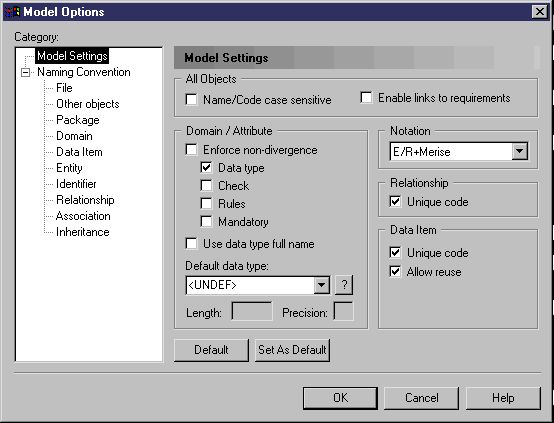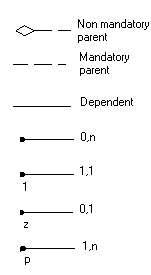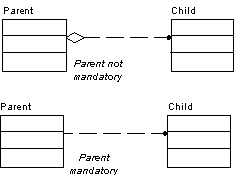

Chapter 2 Conceptual Data Model Basics
To set Model Settings, select Tools→Model Options or right-click the diagram background and select Model Options from the contextual menu.

The options on this tab affect all the objects in the model, including those already created, while changes to the object-specific options on the sub-category tabs only affect objects created subsequently.
You can set the following options on this tab:
| Option | Description |
|---|---|
| Name/Code case sensitive | You can define the case sensitivity of names and codes for all objects in the current model. When this check box is selected, it implies that you can have two objects with identical name or code but different case in the same namespace.
Unlike other model options, you can modify the name and code case sensitivity during the design process. However, if you do so, make sure you run the check model feature to verify if the model does not contain any duplicate object. |
| Enable links to requirements | Requirements are descriptions of customer needs that must be satisfied during development processes.
You can enable links to requirements for all objects in the current model. When this check box is selected, it implies that the Requirements tab is displayed in the objects property sheet. The Requirements page allows you to attach requirements to objects; these requirements are defined in the Requirements models open in the workspace. Attached requirements and Requirements models are synchronized. For more information on requirements, see the Requirements Model User's Guide . |
You can choose to use one or both of the following notation types in the current model:
| Option | Description |
|---|---|
| Entity / Relationships | [Default – used throughout this manual] Entity/relationship notation connects entities with links representing one of four relationships between them. These relationships have properties that apply to both entities involved in the relationship

|
| Merise | Merise notation uses associations instead of relationships

|
| E/R + Merise | Both entity/relationship and Merise are used in the same model |
| IDEF1X | Data modeling notation for relationships and entities. In this notation, each set of relationship symbols describes a combination of the optionality and cardinality of the entity next to it

|
When you change notation, all symbols in all diagrams are updated accordingly.
For the IDEF1X notation:
| Cardinality | Representation |
|---|---|
| One - Many | 
|
| One - One or Many - Many | 
|
| One - One dependent displays a continuous line and entity with rounded angles | 
|
PowerDesigner does not support the following notation:

or

Sub-type or inheritance symbol changes according to the Complete property:
| Complete | Symbol |
|---|---|
| Yes | 
|
| No | 
|
| Option | Description |
|---|---|
| Unique code | Requires that data items have unique codes |
| Allow reuse | Makes it possible to reuse one data item as an attribute for more than one entity provided the attributes have same name and data type and do not belong to a primary key.
When deselected or when the attribute belongs to a primary key, the data item cannot be reused. In this case, if the Unique code check box is selected, a new data item with identical name but different code is created, otherwise a new data item with identical name and code is created |
When you delete an entity or entity attributes, these options determine whether or not the corresponding data items are also deleted, as follows:
| Options set | Result of deleting an entity attribute |
|---|---|
| Both | Deletes the entity attribute. |
| Unique Code only | Deletes the entity attribute. |
| Allow Reuse only | Deletes the entity attribute and the corresponding data item (if it is not used by another entity). |
| None | Deletes the entity attribute and the corresponding data item. |
| Option | Description |
|---|---|
| Unique code | Requires that relationships have unique codes. |
| Copyright (C) 2007. Sybase Inc. All rights reserved. |

| |